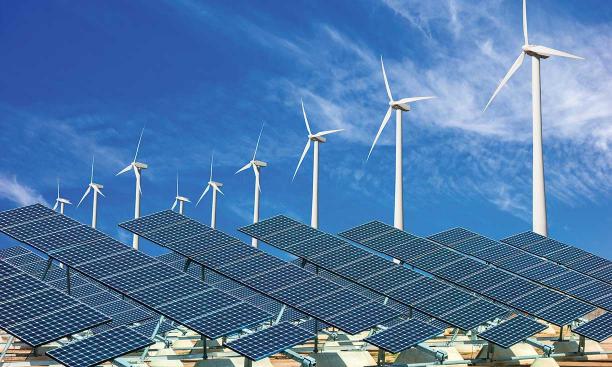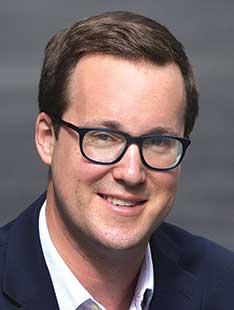
The report, “Net-Zero America,” concludes that transitioning to a net-zero carbon-emitting economy within three decades is not only possible, but can be done using technology that already exists, with a relatively low price tag: 4–6 percent of gross domestic product annually. That’s what the United States has historically spent on energy.
Yet the report also makes clear that decarbonizing our energy supply in such a short time is a daunting task. The process must begin immediately, starting with building a clean-energy infrastructure at an unprecedented scale and speed. A net-zero transition would also require rapid shifts in consumer behavior and land use: By 2050, Americans must embrace electric vehicles and adapt to a landscape transformed by wind and solar farms.
The research team behind the report was co-headed by the Andlinger Center’s Eric Larson, a senior research engineer; Chris Greig, senior research scientist; and Jesse Jenkins, assistant professor of mechanical and aerospace engineering. Seven additional Princeton researchers and eight external collaborators also contributed to the report, released in December as a 345-page summary of two years of research.
The report’s findings underscore the need for a unified, collaborative approach. As Jenkins explained to The Washington Post, “The costs are affordable, the tool kit is there, but the scale of transformation across the country is significant. This is a major national undertaking that will only happen if we have the right national commitment.”
FIVE PATHS, ONE GOAL
Scientists broadly agree that preventing carbon dioxide from accumulating further in the atmosphere is key to mitigating the worst effects of climate change. The Biden-Harris administration has pledged to work toward net-zero emissions and a switch to 100 percent clean energy by 2050.
The Princeton team mapped out five pathways that would bring the United States to net-zero within 30 years. The report is the first to examine the potential methods and consequences of decarbonization at a granular level, mapping the transition decade by decade, state by state, and even county by county.
Each of the five pathways assumes a significant overall increase in electrification, with a focus on energy derived from renewable sources, primarily wind, solar, and biomass. In four out of five pathways some use of fossil fuels would persist and would be offset by carbon capture to ensure a net-zero outcome. One pathway envisions a high reliance on biomass in the form of nonedible crops that can be used for both hydrogen fuel and carbon capture and storage. Carbon emissions vanish completely only under the fifth and most ambitious pathway, which relies on 100 percent renewable energy. It is the only pathway that posits no use of fossil fuels or nuclear power by 2050 and no underground carbon storage.
The report identifies economic benefits that would result from a net-zero economy. It says all five pathways would create between 500,000 and 1 million new jobs in the clean-energy sector by 2030. Job losses in fossil-fuel industries would be more than offset by new jobs created in almost every state. In states where job losses would not be offset, policymakers could create safeguards for affected workers.
The report also predicts major health advantages. All five pathways are said to prevent between 200,000 and 300,000 premature deaths due to air pollution by 2050. In each pathway, the use of coal would cease by 2030, avoiding 100,000 premature deaths from coal-related emissions by 2050.
The researchers avoid recommending one pathway over another. According to Greig, they don’t expect that any of the hypothetical pathways would be implemented exactly as written. Instead, they anticipate that policymakers would pursue a blend of approaches.
“We have to keep as many options alive and real as we can,” Greig said, which means keeping technologies like advanced nuclear energy, bioenergy, and carbon capture and storage in play during the near future. “If we start to take options off the table, then we risk running into unforeseen obstacles. We want to have the flexibility to pivot.”
OBSTACLES AND OPPORTUNITIES
The researchers are candid about the significant challenges their initiative will face. Outside experts who’ve responded to their work have emphasized that reaching net-zero may take longer than the ideal scenarios the report projects, due to inevitable hurdles like bureaucratic red tape, entrenched consumer habits, and political gridlock.
The report recommends wind- and solar-generated electricity increase between twofold and threefold by 2030. That target requires vast quantities of land. Under all three high-electrification pathways, the report envisions wind farms blanketing about 200,000 square miles, mostly in the Midwest — an area about the size of Colorado and Wyoming combined. Offshore wind farms would also take up significant space along the mid-Atlantic and New England coasts. This type of intensive land use is likely to encounter local opposition.
The energy also must be delivered. Under one of the high electrification pathways, the U.S must increase its electricity-transmission capacity 60 percent by 2030 and triple it by 2050. As Jenkins described in a press release, that means building the equivalent of the nation’s entire existing power grid over the next 15 years and then building the same amount again over the following 15.
The report assumes that between 61 percent and 96 percent of new cars in the United States would be electric by 2050. Today, fewer than 2 percent of new cars are electric.
For Joshua Drossman ’22, an ORFE major who contributed to the report, confronting the scale of structural change needed to reach net-zero was eye-opening. “In terms of building out electricity capacity, I hadn’t even considered the fact that you also need to build out transmission lines and distribution sites,” which can cost as much as the electricity-generation sources themselves, he noted. “There are all these hidden numbers that come into play.”
Greig, who spent years in the agriculture, mining, and energy industries before entering academia, is particularly aware of the need to build consensus around net-zero goals as quickly as possible. “Having the community accept the visual impact of wind farms and the massive amounts of infrastructure building is going to be critical, and it has to happen fast,” he says. “In my career, the one thing I’ve found is that if you want to bring the community along, don’t try to rush them”— yet in this case, he says, rushing is the only option.
The researchers are eager for their findings to have a tangible impact. In addition to briefings with policymakers and investors, they are preparing a website where their state-by-state data will be available for anyone to download.
In spite of the challenges ahead, Larson says that compared to other nations, the United States is “probably in a much better position to get this done because of our land and our resource base.” He adds that when it comes to the movement toward net-zero, “we have the potential to be a leader.”

